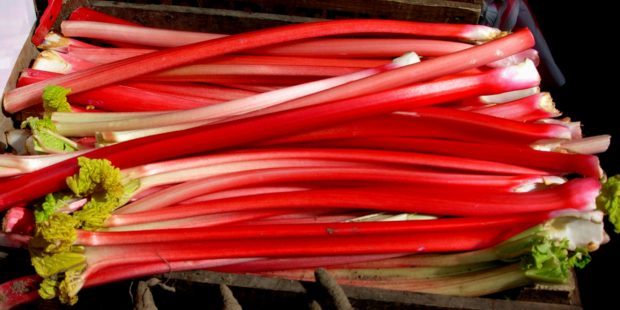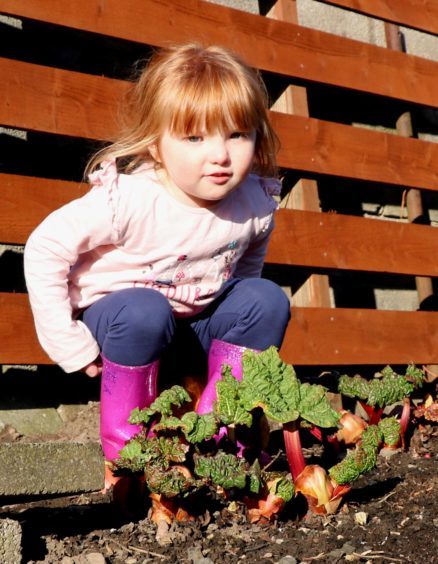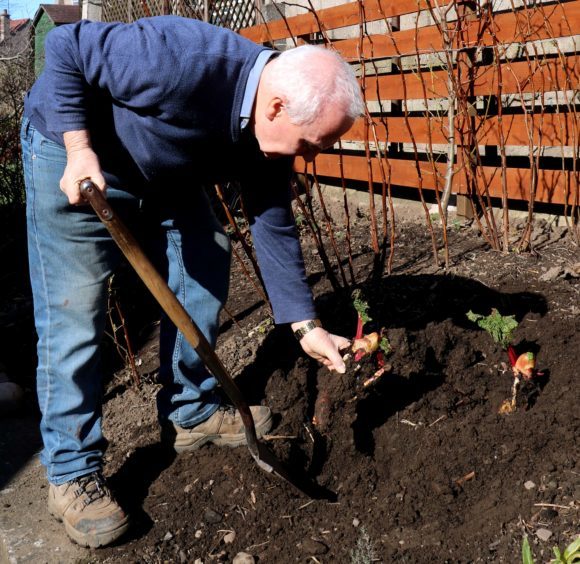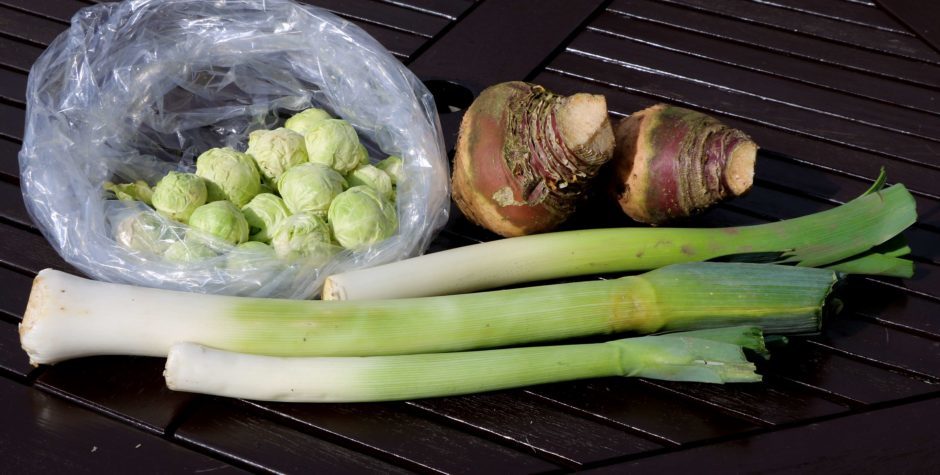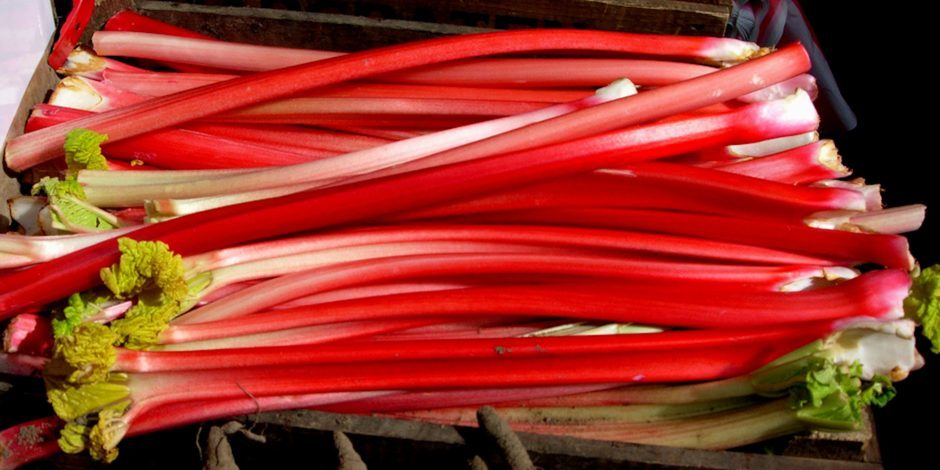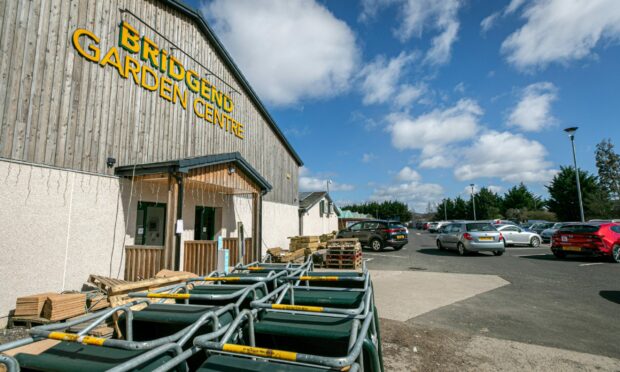Rhubarb was always popular in childhood days as most folk with a garden had a wee patch.
It was free food, happy to be left to grow in a dark corner.
Mother used it for pies, crumbles, and we kids often got a wee treat going to school with a stick of rhubarb and a poke of sugar.
We always looked upon it as a fruit.
No-one had any idea of its nutritional merit.
Today it is a different story as it has been well studied and just about reached super food status, so long as you cut back a bit on the sugars.
It is a very healthy food being high in anti-oxidants, calcium and potassium, manganese, and magnesium. dietary fibre, protein, vitamin C, vitamin K, and B complex.
Rhubarb has been in use for thousands of years though mainly as a medicinal drug, but then in the 19th century a London nurseryman looking for ways to use the new imported sugar, added the sugar to the rhubarb waste products to make a sweet tart.
His rhubarb tarts took off in a big way.
Rhubarb grows best on clay soils so Yorkshire became famous for its forced rhubarb grown in huge sheds in complete darkness.
This area in Yorkshire became known as the rhubarb triangle from Leeds and Wakefield to Bradford.
They had the best clay soils, a woollen industry to supply shoddy, an organic manure, a coal industry to supply cheap heating for the forcing sheds and a road and rail network to get the product to markets.
During the last war its popularity faded due to restrictions on imported sugar, then later on there was a surge of imported tropical fruit from all over the world.
The humble rhubarb could not compete, until today as research is discovering just how important rhubarb is for our good health.
Cultivation
Rhubarb grows best on well drained clay soils that have been well manured and deeply cultivated.
Give them a dressing of fertiliser in spring and keep them well weeded and watered in summer.
Regular picking will encourage new leaves to continue to form. Remove all flowering stems as they appear.
Plant crowns with two or three buds in winter about three feet apart in well prepared soil.
Do not pick off any leaves in the first year.
They will then grow and crop for up to five years before needing dug up, split up and replanted.
Some mature roots can be forced to give an early crop.
Good reliable varieties include Timperley Early, Stockbridge Arrow and Queen Victoria follow and then Cawood Delight crops later but with the best deep red stems.
Forcing
Use mature roots about three to five years old.
Dig them up in early winter and let them get their cold period of frost.
An excellent spot for forcing is under the greenhouse staging with light excluded with black polythene.
Keep them moist, but don’t water the stems otherwise they could rot Sticks are ready for picking in four to six weeks.
Always twist and pull them, do not cut them off. When the crop is finished put the old crowns on the compost heap as they will be spent.
Cooking
Rhubarb crumble, pies, tarts and stewed rhubarb with custard is heavenly.
However try rhubarb and fig jam, or rhubarb and saskatoon jam.
This one is our favourite.
Crush three pounds Saskatoon berries and two pounds chopped rhubarb and add to jam pan with a half cup of water, juice of one lemon and a teaspoon of citric acid.
Add five pounds sugar and bring to a rolling boil for ten minutes then test. It is quick, easy and delicious.
Wee jobs to do this week
Enjoy the remains of stored crops as not many keep beyond April.
Apples dessert and cooking, onions, potatoes, beetroot, carrot and parsnip kept in a cool airy place have lasted till the end of winter.
Some potatoes have sprouted, so it helps if you remove these as soon as possible otherwise they suck the tubers dry.
Outdoors, cabbage, sprouts, leeks, kale and swede have all but finished, although the freezer is still bulging with fruit and vegetables.
